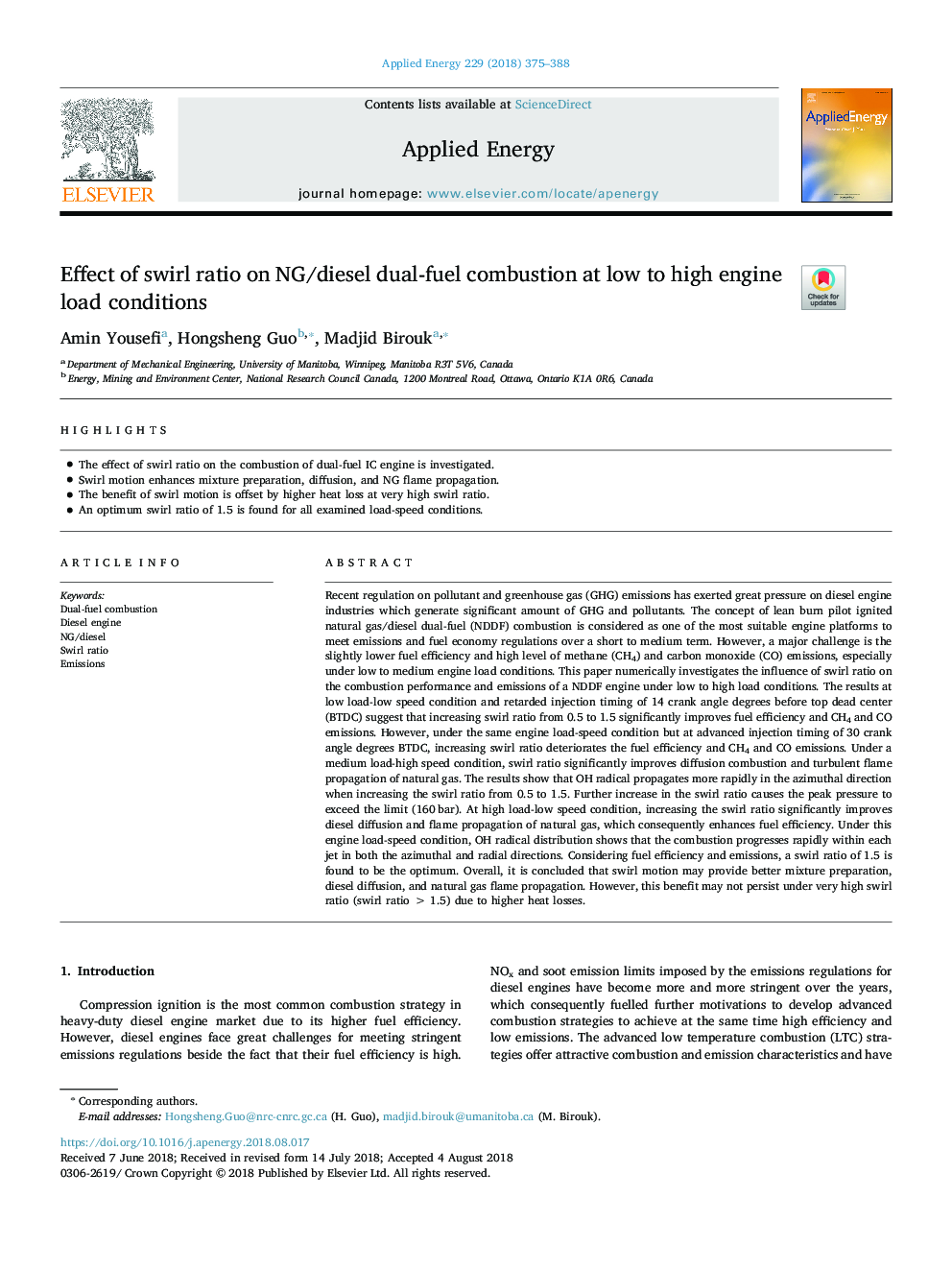| کد مقاله | کد نشریه | سال انتشار | مقاله انگلیسی | نسخه تمام متن |
|---|---|---|---|---|
| 6679652 | 1428062 | 2018 | 14 صفحه PDF | دانلود رایگان |
عنوان انگلیسی مقاله ISI
Effect of swirl ratio on NG/diesel dual-fuel combustion at low to high engine load conditions
دانلود مقاله + سفارش ترجمه
دانلود مقاله ISI انگلیسی
رایگان برای ایرانیان
کلمات کلیدی
موضوعات مرتبط
مهندسی و علوم پایه
مهندسی انرژی
مهندسی انرژی و فناوری های برق
پیش نمایش صفحه اول مقاله

چکیده انگلیسی
Recent regulation on pollutant and greenhouse gas (GHG) emissions has exerted great pressure on diesel engine industries which generate significant amount of GHG and pollutants. The concept of lean burn pilot ignited natural gas/diesel dual-fuel (NDDF) combustion is considered as one of the most suitable engine platforms to meet emissions and fuel economy regulations over a short to medium term. However, a major challenge is the slightly lower fuel efficiency and high level of methane (CH4) and carbon monoxide (CO) emissions, especially under low to medium engine load conditions. This paper numerically investigates the influence of swirl ratio on the combustion performance and emissions of a NDDF engine under low to high load conditions. The results at low load-low speed condition and retarded injection timing of 14 crank angle degrees before top dead center (BTDC) suggest that increasing swirl ratio from 0.5 to 1.5 significantly improves fuel efficiency and CH4 and CO emissions. However, under the same engine load-speed condition but at advanced injection timing of 30 crank angle degrees BTDC, increasing swirl ratio deteriorates the fuel efficiency and CH4 and CO emissions. Under a medium load-high speed condition, swirl ratio significantly improves diffusion combustion and turbulent flame propagation of natural gas. The results show that OH radical propagates more rapidly in the azimuthal direction when increasing the swirl ratio from 0.5 to 1.5. Further increase in the swirl ratio causes the peak pressure to exceed the limit (160â¯bar). At high load-low speed condition, increasing the swirl ratio significantly improves diesel diffusion and flame propagation of natural gas, which consequently enhances fuel efficiency. Under this engine load-speed condition, OH radical distribution shows that the combustion progresses rapidly within each jet in both the azimuthal and radial directions. Considering fuel efficiency and emissions, a swirl ratio of 1.5 is found to be the optimum. Overall, it is concluded that swirl motion may provide better mixture preparation, diesel diffusion, and natural gas flame propagation. However, this benefit may not persist under very high swirl ratio (swirl ratioâ¯>â¯1.5) due to higher heat losses.
ناشر
Database: Elsevier - ScienceDirect (ساینس دایرکت)
Journal: Applied Energy - Volume 229, 1 November 2018, Pages 375-388
Journal: Applied Energy - Volume 229, 1 November 2018, Pages 375-388
نویسندگان
Amin Yousefi, Hongsheng Guo, Madjid Birouk,